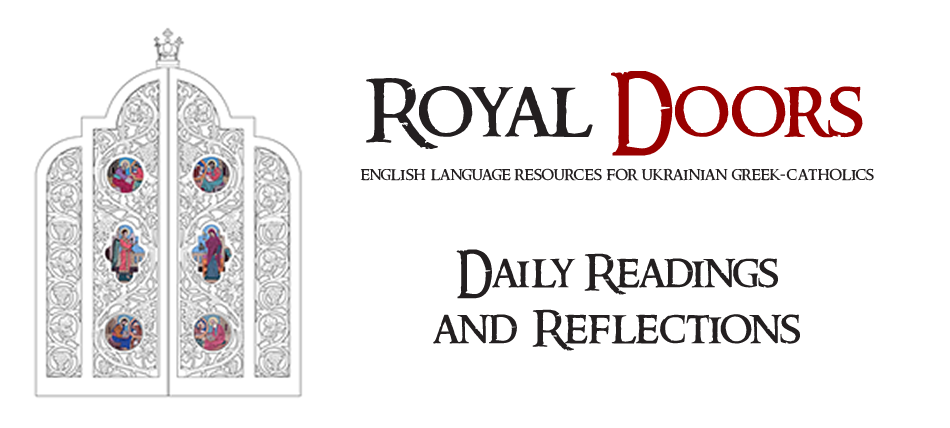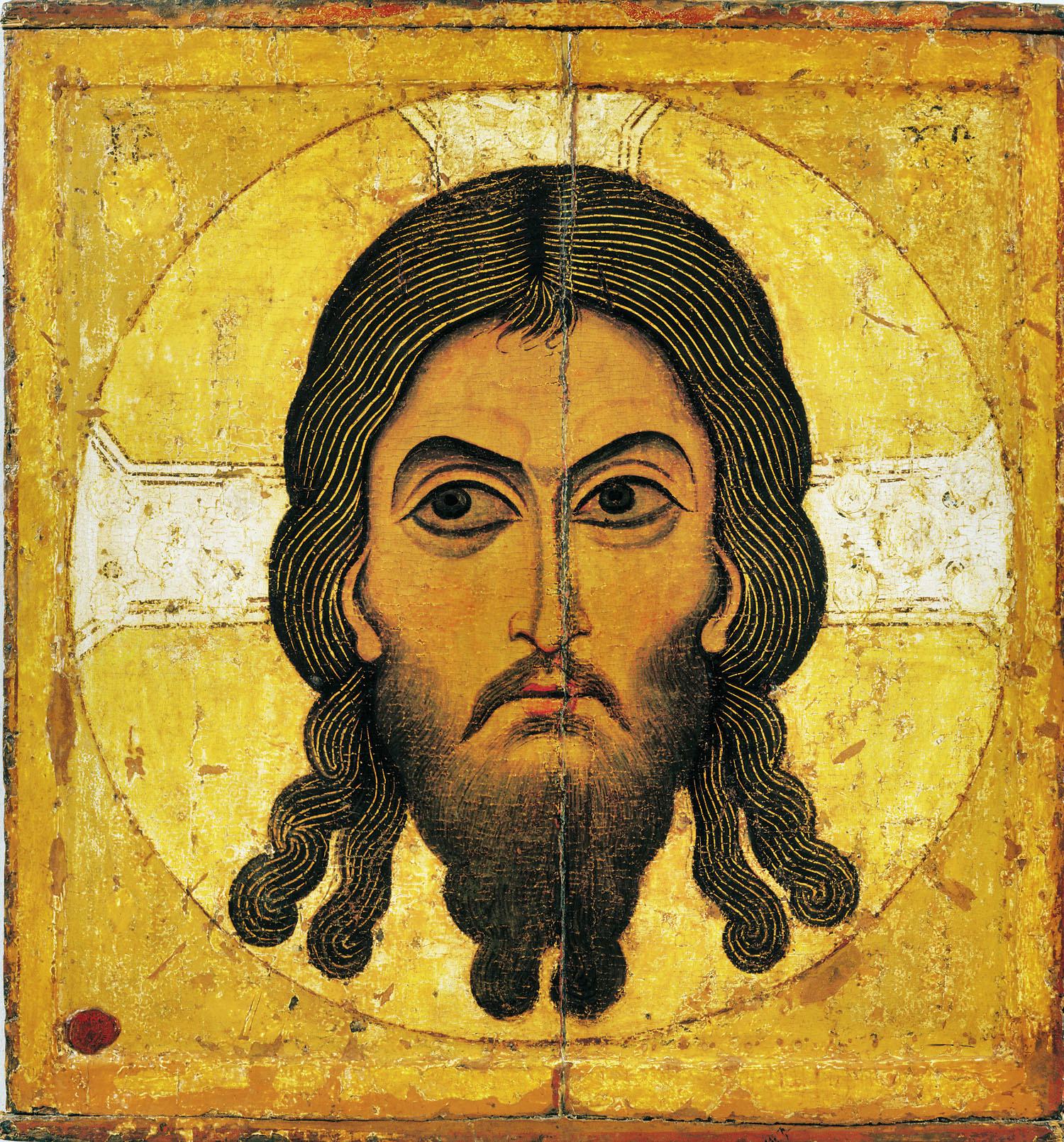Many Americans are familiar with the image of Our Lady of Guadalupe, miraculously imprinted on the cape of a Nahuatl Aztec in sixteenth-century Mexico. Such an image is called “not made with hands,” meaning that its origin is spiritual or even divine.
The Guadalupe cape is not the first image of this sort in Christian history. The most famous icon not made with hands is the image of Christ’s holy face known as the Mandylion (sometimes translated as “towel” or “napkin”): Its history is fascinating and not altogether clear.
The Image of Edessa
From at least the sixth to the tenth century a “God-made image” of Christ was venerated in Edessa, a Syriac city on the Persian border. In the year 525 the Daisan River, a tributary of the Euphrates, flooded part of the city. During the reconstruction of the city wall the image, on cloth, was discovered hidden in the wall over one of the city gates, reportedly inscribed “O Christ our God, no one who hopes in You will ever be put to shame.”
Contemporary writers associated this image with the story of the first-century king of Edessa, Abgar, who had written to Christ asking Him to visit Edessa and heal him of an illness. The Lord reportedly wrote back saying that He could not come but would send one of His disciples in due time. After the resurrection, the disciple Thaddaeus (Addai) brought the Gospel to Edessa and reportedly healed the king. The fourth-century historian Eusebius of Caesarea recorded this story in his History of the Church and claimed to have seen the letter in the Edessa chancery and translated it. The pilgrim nun Egeria, who visited Edessa in 384 also claimed to have seen this letter.
In 593 Evagrius the Stoic in his Ecclesiastical History mentions that Edessa was home to a “God-made image” of the face of Christ imprinted on cloth. The story quickly spread throughout the Churches. The eighth-century Pope of Rome, Gregory II, described it as a commonly known fact and St John of Damascus cited it in his work On the Holy Images. This image was regularly connected to the stories of Christ, Abgar and Addai. In the version recounted by John of Damascus, a painter sent by King Abgar to make “a likeness of the Lord” could not do so “because of the brightness that shone from His countenance.” The Lord then placed a garment over His face to create the image.
From Edessa to Constantinople
From the sixth century to the eighth an icon of Christ on cloth served as a banner for the Byzantine army. It had led the army of Heraclius in his seventh-century battles against the Persians but had disappeared in 705, according to the Byzantine writer Georgios Kedrenos, during an interruption in the reign of Justinian II.
In 944 Edessa, then under Islamic rule, was besieged by a Byzantine army led by its leading general, John Kourkouas, who exchanged a group of Muslim prisoners for the “God-made image.” It was taken to Constantinople where it was received in triumph and enshrined in the chapel of the imperial palace. It is this event which the Byzantine Churches still commemorate on August 16.
The Mandylion remained in Constantinople until the city was sacked by the Crusaders in 1204. Many of its treasures were looted and taken to western Europe. The Crusader-King Baldwin II sold a number of Byzantine treasures to King Louis IX of France. The relics were enshrined in his Sainte Chapelle in Paris until they disappeared during the French Revolution.
The Mandylion and the Shroud of Turin
The image of Edessa was described in a sixth-century Greek text as a tetradiplon (folded four times). Several modern authors have argued that the Shroud of Turin, folded in this manner, would display only the holy face. They also point to the distinct crease marks on the Shroud, suggesting that it had been folded for a long time. Finally they cite a certain Gregory, a tenth-century treasurer at Hagia Sophia, who said that the image of Edessa was painted “in sweat and blood.” They also note that scientists have identified traces of pollen on the Shroud native to all three of the locations associated with the Mandylion: Jerusalem, Edessa and Constantinople.
Images of the Image
The earliest known Byzantine icon of the Mandylion is preserved at the Monastery of St. Catherine on Mount Sinai. It has been dated to mid-tenth century, when the actual Mandylion was brought to Constantinople. Since then many icons have appeared, some showing the cloth; others depicting only the holy face.
Icons of the Mandylion present us with a problem when we go to venerate them. Iconographic etiquette dictates that we kiss the hands or feet of Christ in icons, never the f ace. On icons of the Mandylion it is proper to kiss the cloth, if shown, or the hair but not the face. As we say in the prayer before Communion, “I will not give You a kiss like Judas did.”
The Holy Mandylion itself or icons of it – indeed any icon of Christ – point to the divine icon truly made without hands: the Lord Jesus Himself. “He is the image of the invisible God, the firstborn over all creation; for by Him all things were created that are in heaven and that are on earth, visible and invisible, whether thrones or dominions or principalities or powers. All things were created through Him and for Him” (Colossians 1:15-16). He is, as St. Gregory of Nyssa, wrote, “The Wisdom of God, not made by human hands, now become a creature for our sake.”
When Christ chose His disciples and sent them forth He said to them, “Blessed are the eyes which see the things you see; for I tell you that many prophets and kings have desired to see what you see, and have not seen it, and to hear what you hear, and have not heard it” (Luke 10:23, 24). The Mandylion, the Shroud and icons of them give us a glimpse of what they saw and more.
Before Your most pure image we bow in worship, begging forgiveness for our sins, O Christ God; because You chose of Your own free will to ascend upon the cross in the flesh in order to deliver from the Enemy’s bondage those You had created. For this reason we cry out to You in thanksgiving, “You have filled all things with joy, O our Savior, when You came to save the world!” (Troparion)

